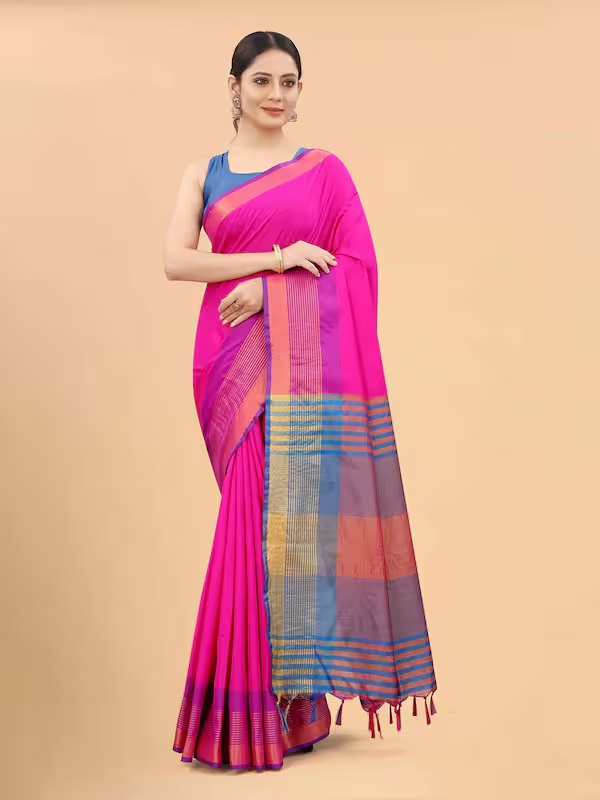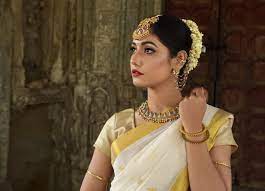Silk, known as the queen of fabrics, has always held a special place in the hearts of connoisseurs of fashion and culture. Among the myriad forms of silk garments, the pure silk saree stands out as a quintessential symbol of grace, elegance, and tradition in many parts of the world, especially in the Indian subcontinent.
Crafted meticulously from the finest silk fibres, pure silk saree exudes a luxurious aura that is unmatched. The weaving process itself is a labour of love, often passed down through generations of skilled artisans who invest their expertise and creativity into every piece. Each pure silk saree tells a story, bearing witness to the rich heritage and craftsmanship of its origin. One of the most celebrated varieties of pure silk sarees is the Banarasi silk saree, hailing from the ancient city of Varanasi in India. Adorned with extravagant brocade work and elaborate designs inspired by Mughal art, Banarasi silk sarees epitomize opulence and grandeur. They are favoured choices for weddings and festive occasions, symbolizing prosperity and tradition. Another iconic variant is the Kanjeevaram silk saree, originating from the town of Kanchipuram in Tamil Nadu, India. Renowned for their vibrant colours, elegant motifs, and heavy silk borders, Kanjeevaram sarees are prized possessions cherished for their durability and timeless appeal. They are often passed down as bequests from one generation to the next, symbolizing familial bonds and cultural heritage.
Beyond their aesthetic appeal, pure silk saree carries profound cultural significance. They serve as symbols of femininity, grace, and tradition, adorning women on auspicious occasions and rites of passage. Moreover, they foster economic empowerment by providing livelihoods to countless artisans and weavers, thereby sustaining age-old craft traditions.
Wrap Yourself in Tradition, Embroidered Saree Elegance
In the vast tapestry of Indian traditional attire, the embroidery saree stands out as a masterpiece where art intertwines with elegance. Adorned with extravagant needlework, embroidery sarees are a testament to the rich heritage and craftsmanship of India’s textile traditions.
Embroidery, a form of decorative stitching, adds depth, texture, and personality to sarees, transforming them into wearable works of art. The process involves skilled artisans meticulously hand-stitching threads onto fabric, creating stunning patterns, motifs, and accessories that reflect the cultural ethos and artistic sensibilities of their region. One of the most celebrated forms of embroidery saree is the Zardosi saree, originating from Persia and flourishing in India during the Mughal era. Zardosi, which translates to “gold embroidery,” involves the use of metallic threads, sequins, and beads to create elaborate designs that exude opulence and grandeur. These sarees are often worn on special occasions such as weddings and festive celebrations, symbolizing luxury and prestige. Another prominent variant is the Chikankari saree, hailing from the city of Lucknow in Northern India. Characterized by its delicate white-on-white embroidery, Chikankari sarees epitomize understated elegance and sophistication. Crafted using techniques passed down through generations, these sarees feature decorative motifs inspired by nature, such as flowers, birds, and vines, showcasing the exquisite craftsmanship of the artisans.
Embroidery saree also encompasses a diverse range of regional styles and techniques, each reflecting the unique cultural identity of its origin. From the vibrant Phulkari sarees of Punjab to the colourful Kantha sarees of West Bengal, embroidery serves as a medium for storytelling, conveying the traditions, beliefs, and folklore of different communities.





